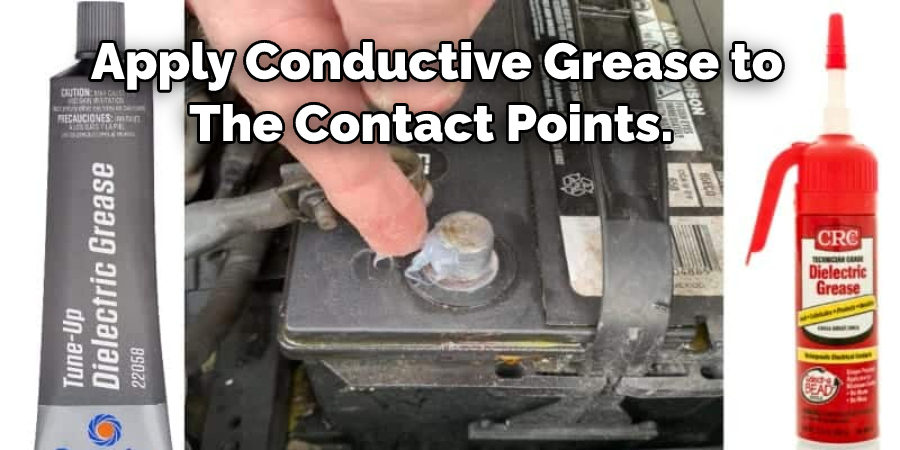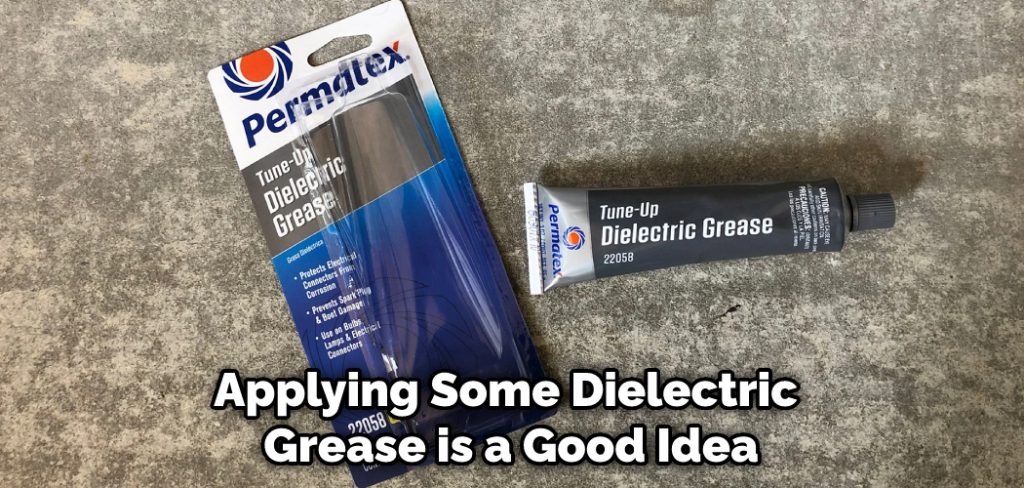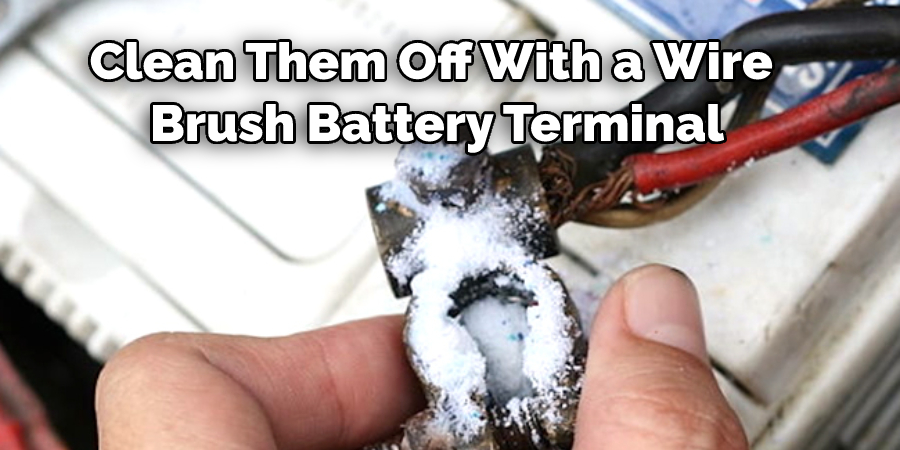Batteries are a common household item, and most people know how to use them. However, many people do not know how to fix a battery that has a stripped terminal. One of the most frustrating parts is dealing with the terminals. If they’re not properly disconnected, they can easily become stripped.
This blog post will explain how to fix a stripped battery terminal in a few easy steps. In addition, we will also provide tips on how to prevent your battery from becoming damaged in the first place. So, whether you are a beginner or an experienced user, this blog post will be helpful to you.

What Causes a Striped Battery Terminal?
The main cause of a stripped battery terminal is corrosion. Corrosion can happen when your battery leaks acid or is exposed to moisture. Sometimes, you might even see greenish-white powder around the terminals.
This powder is lead sulfate, a telltale sign of corrosion. When the lead sulfate builds up, it can prevent the electrical current from flowing properly, and that’s when you start having problems with your car.
8 Effective Methods on How to Fix a Stripped Battery Terminal
1. Using an Angle Grinder:
If you have an angle grinder, then using it to remove corrosion from your battery terminal is the best way to get the job done. First, disconnect the negative terminal of your battery. Then, take a grinding wheel and attach it to the angle grinder. Next, start the grinder and hold it against the corroded part of the terminal. Keep grinding until the corrosion is completely removed. Finally, reconnect the negative terminal of your battery.
2. Using a Wire Brush:
If you don’t have an angle grinder, you can use a wire brush to clean the contact points. Just make sure to use a brush made of stainless steel or another non-corroding material. First, remove the battery cable from the terminal. Next, use the wire brush to scrub any corrosion or debris on the terminal. Once the points are clean, reattach the battery cable and tighten it down.
3. Applying Conductive Grease:
If you want to prevent corrosion on your car battery, you can apply conductive grease to the contact points. This will create a barrier between the metal and the air, preventing oxidation. First, remove the battery cable from the terminal. Next, apply a small amount of grease to the terminal. Finally, reattach the battery cable and wipe away any excess grease.

4. Disconnect the Negative Terminal:
To start, disconnect the negative terminal of your battery. This will help prevent any sparks or electrical shorts. Next, loosen the bolt that holds the negative cable using a wrench. Once the bolt is loosened, pull the cable off of the terminal. If you find the cable difficult to remove, use a pair of pliers to help grip it and pull it off.
5. Clean the Battery Post:
Once the negative terminal is disconnected, you can clean the battery post. To do this, you will need some baking soda and water. Make a paste from the baking soda and water, and then use an old toothbrush to scrub the battery post.
This will remove any corrosion that has built up on the post. If you see any greenish-white powder on the post, this is corrosion. You want to ensure that you remove as much of this as possible. After scrubbing the battery post, rinse it with some clean water. Then, dry it off with a clean cloth.
6. Use Rubbing Alcohol to Clean the Terminal:
You can use rubbing alcohol to clean the contact points on the battery terminal. This will help remove any grease or dirt that may prevent the connection from being made. First, remove the battery cable from the terminal. Next, use a cotton swab or cloth soaked in rubbing alcohol to clean the contact points. Once the contact points are clean, reattach the battery cable and try starting the car again.
7. Use a Commercial Cleaner:
You can use a commercial battery terminal cleaner if you don’t have any rubbing alcohol. This will also help to remove any corrosion or build-up on the terminals. First, disconnect the negative terminal of your battery. Next, spray the terminals with the cleaner and let them sit for a few minutes. Finally, use a brush to scrub the terminals clean.
8. Apply Dielectric Grease:
After you’ve cleaned the battery terminals, applying some dielectric grease is a good idea. This will help to prevent corrosion in the future. First, disconnect the negative terminal of your battery. Next, apply a thin layer of dielectric grease to the terminal. Make sure to cover the entire surface. Finally, reconnect the negative terminal and tighten it securely.

Some Helpful Tips To Prevent Stripped Battery Terminal
1. Use a terminal brush to clean the battery terminals and keep them free of corrosion.
2. Inspect the battery terminals and clamps regularly for cracks, breaks, or other damage.
3. Torque the battery terminals using a torque wrench to the correct torque specification.
4. Use dielectric grease on the battery terminals to help prevent corrosion.
5. Ensure the battery terminal connections are tight and free of corrosion before reconnecting the battery.
6. Inspect the battery cables for signs of wear or damage and replace them if necessary.
7. Use only quality battery terminals and clamps designed to resist corrosion.

Frequently Asked Questions
Can Aluminum Foil Fix a Loose Battery Terminal?
It depends on the specific situation. However, if you have a loose battery terminal and aluminum foil can help fix it, then by all means use it! The research team typically recommends using silver solder or a hot iron to repair damaged connectors on electronic devices. Silver solder has low melting points and will make a secure connection between the metal of the connector and the wire lead inside. A hot iron will heat up quickly so that its molten alloy is tight enough to hold onto both surfaces while forming an electrical contact.
Do You Fix a Battery Terminal That Won’t Tighten?
If you can’t tighten the battery terminal, it’s probably because the terminals are corroded. You can fix this by using a product called Corrosion-X from 3M. Just soak the corroded area in Corrosion-X for 30 minutes, then reattach the connector with a locking ring.
Is White Lithium Grease Ok for Battery Terminals?
Yes, white lithium grease is safe to use on battery terminals. It has low toxicity and minimal flammability, which means it is not likely to cause fire or explosion. Additionally, it can help prevent corrosion and improve the conductivity of metal surfaces.
What Battery Terminal Do You Connect First?
There are a few different types of battery terminals, but the most common is the “+” and “-” terminals. To connect a battery to a power source, you first need to connect the “+” terminal to the power source and then connect the “-” terminal to the battery.
Final Thoughts
Battery terminals can become corroded over time, leading to a loss of power or even a battery failure. If your car won’t start and you think the problem may be with the battery, the first step is to check the terminals. Remove the cables from each terminal and clean them off with a wire brush. If they’re badly corroded, use some baking soda on a damp cloth to scrub them clean.
Once the terminals are clean, reattach the cables and try starting your car again. If it still doesn’t start, you may need to have your battery tested or replaced. If you think the problem is with the terminals, you can try to fix them yourself. We hope this guide on how to fix a stripped battery terminal was helpful! If you have any questions or want to know more, feel free to comment below!
